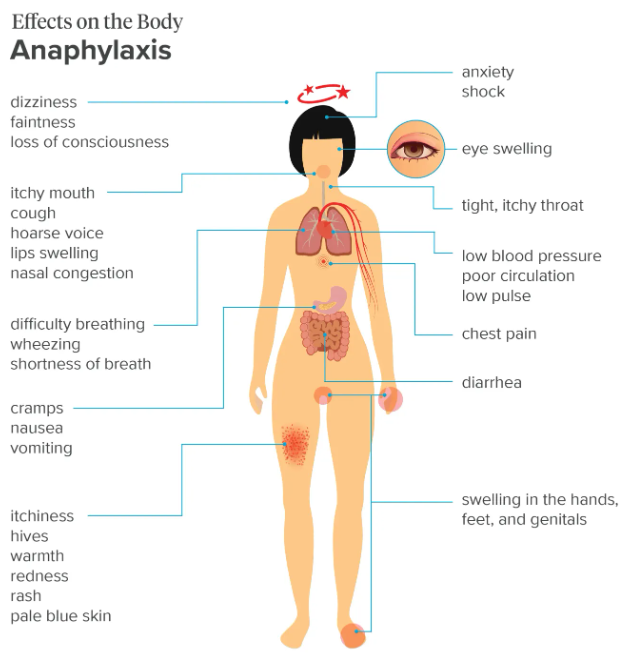Most Missed Question in OB/GYN – DMPA and Adolescent Bone Health
DMPA can cause modest, often reversible BMD declines in adolescents. Counsel on benefits vs risks, discuss alternatives, ensure calcium/vitamin D and weight‑bearing exercise, and document guideline‑based follow‑up.
Question - DMPA & BMD
Which of the following best describes the association between depot medroxyprogesterone acetate (DMPA) and bone mineral density (BMD) loss in adolescent girls?
Answers Options:
A. Decline in bone mineral density (BMD) while on DMPA substantially reverses upon discontinuation of the drug.B. DMPA should not be used for more than 2 consecutive years because of the effect on bone mineral density (BMD).
C. A bone density scan (dual energy X-ray absorptiometry) should be obtained annually on women using DMPA because of the effect on bone mineral density (BMD).
D. Adolescent girls using DMPA should be advised to take calcium and vitamin D supplements because of the effect on bone mineral density (BMD).
E. Adolescent girls using DMPA should be advised that they may experience a permanent decrease in bone mineral density (BMD) with use beyond 2 consecutive years.
DMPA suppresses ovulation and lowers estradiol, leading to a modest BMD decline (~1–2% per year at spine/hip) during use, with substantial recovery after discontinuation and no clear evidence of increased fracture risk. Contemporary guidance emphasizes that while the FDA black box warning (2004) advises caution about prolonged use, expert societies do not impose a hard 2-year limit, and routine DXA monitoring in adolescents is not recommended.
Why do clinicians miss this? Boards expect you to prioritize current consensus statements over legacy label language. ACOG (Committee Opinion 602, reaffirmed 2023) and the Centers for Disease Control and Prevention U.S. Medical Eligibility Criteria (2024) state that benefits of DMPA may outweigh theoretical BMD concerns in adolescents; continuation beyond two years is acceptable when appropriate. Counseling should stress reversibility, avoid unnecessary DXA, and discuss LARC alternatives.
Why This Question Is Often Missed
- Confusion between FDA black box language and updated professional guidance (ACOG 2023 reaffirmation; CDC U.S. MEC 2024) leads to overemphasis on a 2-year cap.
- Overestimation of DMPA-related skeletal harm and underrecognition that BMD loss is largely reversible after discontinuation with no proven fracture signal.
- Misapplication of adult osteoporosis paradigms to adolescents, prompting unnecessary DXA screening and automatic supplement prescriptions.
What the Distractors Indicate
| Option | What It Tests / Implies | Why It’s Wrong Here |
|---|---|---|
| DMPA should not be used for more than 2 consecutive years because of the effect on bone mineral density (BMD) | Takes FDA black box as absolute duration limit | ACOG and CDC do not mandate a 2-year limit; continued use is acceptable when benefits outweigh risks. |
| A bone density scan (dual energy X-ray absorptiometry) should be obtained annually on women using DMPA because of the effect on bone mineral density (BMD). | Assumes routine monitoring is needed | Routine DXA is not recommended in adolescents on DMPA; results are hard to interpret and do not change management. |
| Adolescent girls using DMPA should be advised to take calcium and vitamin D supplements because of the effect on bone mineral density (BMD). | Implies mandatory supplementation | Encourage age-appropriate calcium/vitamin D and weight-bearing activity, but automatic supplementation solely due to DMPA is not evidence-based. |
| Adolescent girls using DMPA should be advised that they may experience a permanent decrease in bone mineral density (BMD) with use beyond 2 consecutive years. | Presumes permanent harm | BMD recovers substantially after stopping DMPA; permanent loss has not been demonstrated in adolescents. |
| Decline in bone mineral density (BMD) while on DMPA substantially reverses upon discontinuation of the drug. | Recognizes reversibility | Correct: BMD decline during DMPA use is typically modest and substantially reversible after discontinuation. |
OBGYN High-Yield Pearl for Exam Prep
On boards, choose “reversible BMD loss without routine DXA or a hard 2‑year stop” when counseling adolescents on DMPA.
Core Learning Objectives
1. Recognize that DMPA-associated BMD loss in adolescents is modest and substantially reversible upon discontinuation, with no clear fracture signal.
2. Apply guideline-based counseling: no routine DXA, no arbitrary 2-year limit, and emphasize shared decision-making and alternative methods when appropriate.
The Exam “Test Trick” at Play
The item pits legacy FDA black box language against current practice standards. Examiners expect you to cite consensus guidance—ACOG (reaffirmed 2023) and CDC U.S. MEC (2024)—which prioritize contraceptive efficacy and patient preference while acknowledging reversible, small BMD changes.
Additional OBGYN Exam Practice Questions and Remediation for DMPA & BMD
OBGYN Practice Question 1 — Counseling a 16-year-old on DMPA
A 16-year-old has used DMPA for 18 months and is happy with amenorrhea and contraception. Best counseling?
A. Schedule annual DXA scans until DMPA is discontinued.B. Stop DMPA at 24 months and switch due to permanent bone loss risk.
C. Start high-dose calcium/vitamin D supplements to prevent bone loss.
D. Discuss continued DMPA with counseling on modest, reversible BMD loss; encourage lifestyle bone health; no routine DXA.
E. Add low-dose estrogen “add-back” to prevent bone loss.
Answer and Remediation
- A — Review: Routine DXA is not recommended in adolescents on DMPA.
- B — Review: No mandatory 2-year stop; loss is largely reversible.
- C — Review: Encourage adequate intake; automatic supplementation is not required without deficiency.
- D — Correct response!: Aligns with ACOG 2023 and CDC U.S. MEC 2024; prioritize informed continuation without routine DXA.
- E — Review: Estrogen “add-back” is not standard for DMPA bone concerns in adolescents.
OBGYN Practice Question 2 — Duration on DMPA
A 17-year-old has used DMPA for 2.5 years without issues. Next best step?
A. Discontinue immediately due to FDA black box.B. Obtain DXA and continue only if Z-score > −1.0.
C. Continue DMPA if desired; review reversibility of BMD loss and discuss LARC alternatives.
D. Switch to combined oral contraceptives solely to protect bone.
E. Start bisphosphonate prophylaxis.
Answer and Remediation
- A — Review: Black box is cautionary; not an absolute stop.
- B — Review: DXA thresholds are not validated for this use in adolescents.
- C — Correct response!: Continuation is acceptable with counseling; consider LARC if preferred.
- D — Review: Switching solely for bone is not mandated; individualize.
- E — Review: Bisphosphonates are inappropriate for this scenario.
OBGYN Practice Question 3 — Magnitude of BMD Change
Which best describes typical BMD change with DMPA in adolescents?
A. 5%–8% annual hip loss, largely permanentB. 3%–4% annual spine gain due to progestin effect
C. ~1%–2% annual decline at spine/hip during use, with recovery after discontinuation
D. No measurable change in BMD
E. Immediate fracture risk doubling within 12 months
Answer and Remediation
- A — Review: Overestimates loss and incorrectly labels it permanent.
- B — Review: DMPA lowers estradiol; it does not increase BMD.
- C — Correct response!: Reflects data summarized by ACOG.
- D — Review: Small declines are observed during use.
- E — Review: No robust evidence of marked short-term fracture risk.
OBGYN Practice Question 4 — Stopping DMPA and BMD Trajectory
After stopping DMPA, what is the expected BMD trajectory in adolescents?
A. Continued decline for years due to residual drugB. Stabilization without recovery
C. Gradual increase toward baseline over 1–3 years, especially at the spine
D. Rapid overshoot above baseline within 3 months
E. No change because DMPA does not affect BMD
Answer and Remediation
- A — Review: Loss does not typically continue after discontinuation.
- B — Review: Recovery, not mere stabilization, is expected.
- C — Correct response!: Substantial recovery is the norm.
- D — Review: Recovery is not immediate or supra-physiologic.
- E — Review: DMPA does affect BMD modestly during use.
OBGYN Practice Question 5 — When to Order DXA
Which scenario warrants DXA in an adolescent on DMPA?
A. Any DMPA use beyond 12 monthsB. Routine annual screening to guide continuation
C. Presence of additional major bone risk factors with clinical concern (e.g., history of pathologic fractures), after shared decision-making
D. All adolescents at DMPA initiation
E. DXA is always contraindicated in adolescents
Answer and Remediation
- A — Review: Duration alone is not an indication.
- B — Review: Routine screening is not recommended.
- C — Correct response!: Consider DXA only for compelling clinical indications beyond DMPA use.
- D — Review: Not recommended at initiation.
- E — Review: DXA can be considered selectively; it is not categorically contraindicated.
Mini Case Discussion Prompt
Compare counseling for a healthy 16-year-old satisfied with DMPA versus a 17-year-old athlete with a stress fracture history and low BMI considering DMPA: How do you balance reversible BMD effects, alternative methods (e.g., LARC), timing of DXA (if any), and shared decision-making?
Mini-FAQ
- Does DMPA cause permanent bone loss in adolescents?
No. BMD typically recovers substantially after discontinuation; board exams expect recognition of reversibility. - Do I need to stop DMPA after two years?
Not necessarily. ABOG-style exams expect you to cite ACOG and CDC U.S. MEC: no hard 2-year cap; continue if benefits outweigh risks. - Should I order routine DXA scans for teens on DMPA?
No. Routine DXA is not recommended in adolescents using DMPA; it rarely changes management. - Should adolescents on DMPA be placed on calcium/vitamin D supplements?
Encourage age-appropriate intake and weight-bearing exercise; supplements are not automatically required unless deficiency is suspected.
This question appears in Med-Challenger OBGYN Review with CME
Try for free and save. Ace your exams and meet your CME/MOC requirements for just $26 a month!
No matter your program, no matter the size, Med-Challenger for Groups and Institutions can better prepare your program or group, fulfill industry requirements, and increase test scores.








